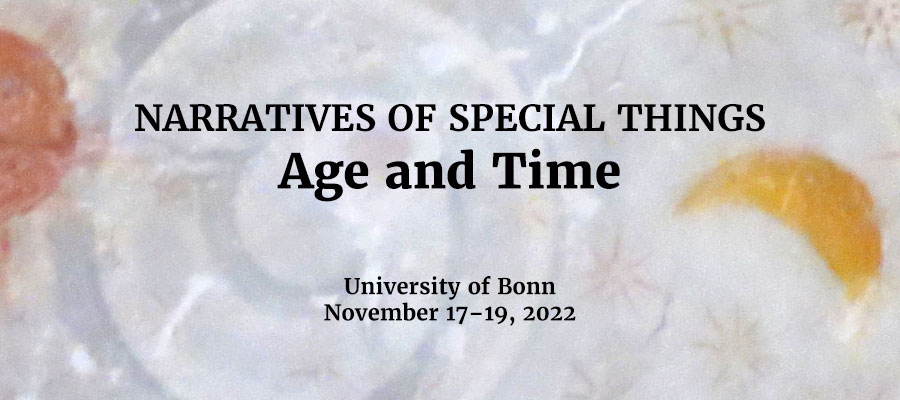Narratives of Special Things: Age and Time, University of Bonn, November 17–19, 2022
What makes something special, worthy of veneration, perhaps even sacred? Age and time are central aspects for marking and recognizing that which is deemed special. By displaying or suggesting age and time, something can be upgraded, downgraded, authenticated, and legitimized. The special thus becomes scalable and measurable. Both material and literary sources provide examples of narratives that communicate and argue with age and time. Methods for the investigation of such narratives have their origins in the various disciplines and the material cultures. Central to the understanding of the re use and transformation of older objects is, for example, the much-discussed use of spolia in Antiquity, Late Antiquity, and the Middle Ages. In this context, recent approaches in the history of ideas and motifs in material and literary sources that focus on the significance of the past for the definition of the present can be useful. The investigation of the material cultures of medieval story worlds with regards to the use and demonstration of power, the visualization of hierarchies and dependencies, and the marking of status or gender follows a similar approach. Such investigation reveals the broad spectrum of things: from mere requisites to symbolic or poetological functions to actors operating on their own authority. In addition to the discipline-specific approaches, narrative theories of special things are also connected by interdisciplinary methods. Crucial for this are, for example, Jan Assmann’s reflections on cultural memory, which, although they have a focus on ancient studies, are not fixed to one genre or to one era, but are conceived comparatively. Similarly, the narrative theory of Gérard Genette and the approaches of Niklas Luhmann in the sociology of communication provide further inspiration.
The workshop will apply narrative-theoretical and communication-sociological considerations diachronically and interdisciplinarily to objects in the sense of Bruno Latour’s Thing Turn. In a comparative approach, the narratives and communication structures that give certain things a prominent position can be examined globally and across history and periods. Contributions from archaeological and art historical, theological and philological disciplines, as well as neighboring disciplines are especially welcome on the following aspects:
- Definitions of age and time
- Who defines age and time?
- Pseudo-age, age as fiction
- Misunderstanding of age
- Materiality of age and time
- Contexts and settings of evidence
- Patterns of age and time narratives
- Explicit and implicit narratives
